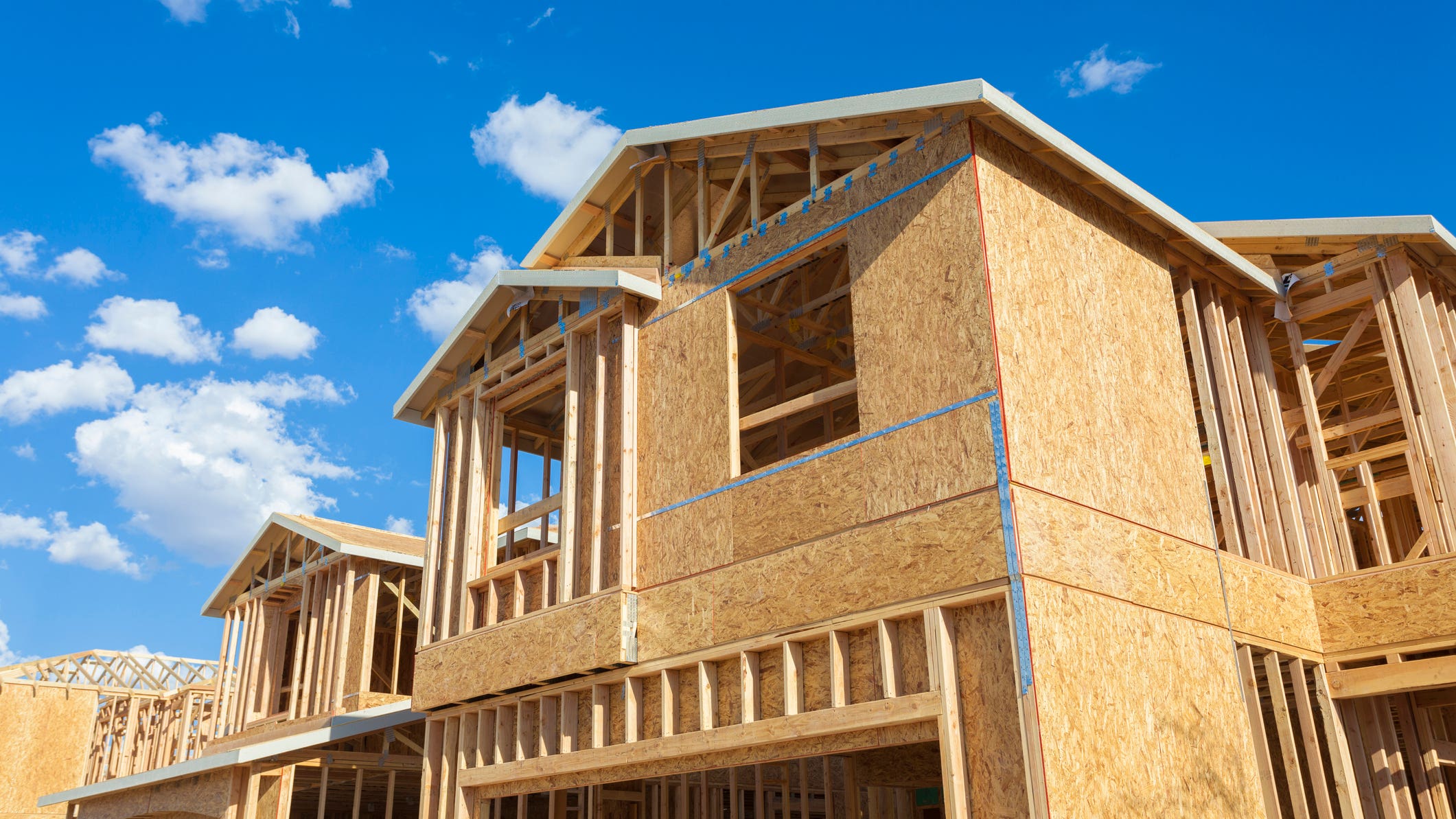U.S. housing starts, and what they mean for homebuyers

Key takeaways
- Housing starts is a term that literally means the number of brand-new housing units started by home builders.
- The metric is a key indicator for the state of the overall economy.
- New-construction homes can help ease the national shortage of existing homes for sale.
If you’re trying to buy a house right now, you might be frustrated by your lack of options. On top of the country’s existing housing shortage, mortgage rates shooting up to 20-year highs mean fewer sellers are willing to give up their locked-in low rates to list their properties. It all adds up to slim pickings for buyers.
If existing homeowners are staying put, but hopeful homebuyers still want to buy, where will the houses come from? The obvious solution is new construction: Builders could just build more homes to fill the need, right? But it’s not so simple. The best way to understand how many new homes you can expect to see in the near future is to look at the country’s housing starts — literally the number of new home builds started. Here’s an overview.
What are housing starts?
Housing starts is the name for a measurement of the total number of new private residences — single-family homes as well as condos, townhomes and apartments — that have broken ground. So, if construction has started on the job site, it qualifies as an official “start.”
The U.S. Census Bureau and U.S. Department of Housing and Urban Development jointly track the figure on a monthly basis and release a monthly new residential construction report that details the number of housing starts that month. The report also tracks the number of housing completions and the number of new building permits issued for new housing (meaning a build has been approved, but has not yet broken ground).
Because housing is a key component of the overall U.S. economy, housing starts are an important economic indicator. As National Association of Home Builders chief economist Robert Dietz pointed out in a recent statement: “Boosting housing production would help reduce the shelter inflation component that was responsible for more than half of the overall Consumer Price Index increase in September and aid the Fed’s mission to bring inflation back down to 2 percent.”
It’s important to note that, like so many other aspects of life, housing starts decreased sharply immediately after the pandemic. Given the subsequent quarantines, supply-chain shortages and permitting delays, bringing the number back up has been a rocky road.
What do housing starts mean for the housing market?
Housing starts are an important indicator for the direction of the overall housing market. When the number increases, it’s a signal that more inventory is on the way. That’s good news for buyers, who have been dealing with a serious shortage of existing homes for sale, and also good news for the real estate industry as a whole.
Economists regularly review the number of housing starts to get a sense of what lies ahead for the housing market. However, you need to dive into the data a bit deeper for a true understanding of what it means.
“The headline numbers are informed by a mix of single-family and multifamily housing,” says Mark Hamrick, Bankrate’s senior economic analyst. “If housing starts are up, it’s easy to assume that the increase aligns with both types of shelter. However, that’s not the case.”
For example, Hamrick points to the Census Bureau’s September 2023 report, which showed an overall 7.2 percent year-over-year drop in the number of housing starts. However, that figure included an 8.6 percent increase for single-family units that was countered by a 31.5 percent drop for multifamily units of five or more.
Additionally, the leading number in the Census Bureau data represents collective housing starts, but real estate is a hyper-local industry. Starts in the Northeast declined by a huge 43.9 percent year-over-year, for instance, while the South posted a 4.6 percent increase overall, and a 16 percent jump in single-family starts specifically. This is consistent with the recent influx of new residents to Sun Belt states from colder (and pricier) areas of the country.
New construction vs. existing homes
If you’re wondering whether it’s smarter to buy a house now or wait, you’re not the only one. National Association of Realtors (NAR) numbers show that existing-home sales in September fell by more than 15 percent since September 2022, and a recent report from Redfin predicts that 2023 will tally the fewest home sales since 2008.
Part of the reason for the slowdown in the market is the fact that most current homeowners are locked into mortgage rates of less than 6 percent — and in some cases, far less. So selling, only to buy a new house at a rate of 8 percent, doesn’t make financial sense.
However, homebuyers don’t have to limit their search to houses that already exist. Another option is to wait for some of those recent housing starts to finish and buy a new-construction home. “If you can’t find somewhere in the supply of existing housing stock, you might be wise to look at the supply that is currently being built,” Hamrick says.
A lot of buyers are taking that route as inventory levels of existing homes languish: In fact, the most recent Census data shows that sales of new single-family homes in September soared close to 34 percent higher (33.9 percent) than in September of last year.
Many builders and developers also offer mortgage products with lower rates, or other types of financial incentives. “Builders often include some assistance with financing to deal with the most severe affordability constraints seen in many decades — it doesn’t hurt to ask,” says Hamrick. “Who knows what promotions a builder may be inclined to offer?”
However, be aware that new-construction homes tend to cost a bit more than existing homes — especially if you choose customizations and upgrades as it’s being built. In September 2023, the median sale price of an existing home per NAR was $394,300; the median for a new-build home the same month was $418,800, per Census data.
New construction pros and cons
Here are some other pros and cons of new construction to consider:
Pros
- You’re the first owner — no one else has lived there before.
- You may be able to customize the home to your liking as it’s being built.
- You may qualify for financial assistance from the builder.
Cons
- Brand-new homes tend to cost more than existing properties.
- Customizing, which can be hard to resist, will cost even more.
- The timeline will be longer, as you have to wait for the home to be completed before you can move in.
Find a local real estate agent
If you’re interested in looking at new construction, first be sure you understand how much house you can afford to buy. Next, find a local real estate agent who is familiar with the new or coming-soon developments in your area. Ideally, you want to work with someone who has experience working with builders. Considering the nuances of buying new construction, it will benefit you to have an expert by your side.
FAQs
-
Yes, the U.S. is currently experiencing a housing shortage — meaning there aren’t enough homes on the market to meet overall buyer demand. Conventional wisdom is that a healthy housing market needs an inventory supply of about 5 or 6 months worth of homes for sale. As of September 2023, according to National Association of Realtors data, we had just 3.4 months of supply.
-
A housing start means that a builder has broken ground on a new residential housing unit. The U.S. Census Bureau and U.S. Department of Housing and Urban Development jointly track housing starts on a monthly basis based on information collected from builders around the country. Information is also compiled by the National Association of Home Builders.
-
The housing market — part of what’s known as the “shelter” category in the U.S. Bureau of Labor Statistics’ Consumer Price Index, which measures inflation — is a crucial part of the country’s economy. When housing starts increase, it means that overall inventory will soon be on the rise, which will lead to more home sales and a healthier housing market.






